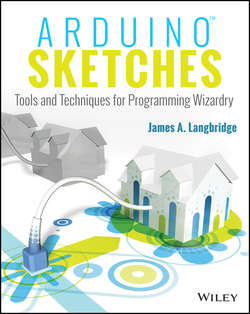Читать книгу Arduino Sketches - Langbridge James A. - Страница 16
На сайте Литреса книга снята с продажи.
Part I
Introduction to Arduino
Chapter 1
Introduction to Arduino
What You Will Need for This Book
ОглавлениеEach chapter has a list of elements required to complete. However, when creating an Arduino project, a few items are required every time. Following is a list:
• A power supply– The Arduino Uno accepts an input voltage of 6 to 20 V, with 7 to 12 V being recommended. Any standard AC-to-DC center-positive adapter should work fine, preferably one that can supply up to or over 1 amp of current.
• Multimeter– Almost any model. You do not need to buy the most expensive, far from it, but it should test DC voltage, DC amperage and continuity, with optional resistance calculation, and AC voltage and amperage if you plan to interface your Arduino to main's power.
• Breadboard– The size depends on your project. Consider a medium-sized board; if it is too small you might not fit all your components (or it might be too cramped, possibly creating short circuits), and large breadboards can cost more and require more space. (I use 680-point breadboards for most of my examples and projects.)
• Resistors– A common element of every project. There are numerous values, but there are some values that will be used more often. There are kits on the market that propose 10 of every value, or you can go with the most common, the choice is yours. To start out, ten 220-ohm, ten 1-kilohm, and ten 10-kilohm resistors should suffice.
• LEDs– A great way of knowing the output of a pin. Coupled with a resistor, it can instantly show the state of your project.
• Other electronic components– Sometimes it is handy to have a small collection of capacitors, switches, and diodes on hand. Each example in this book has a complete list of the required components.
